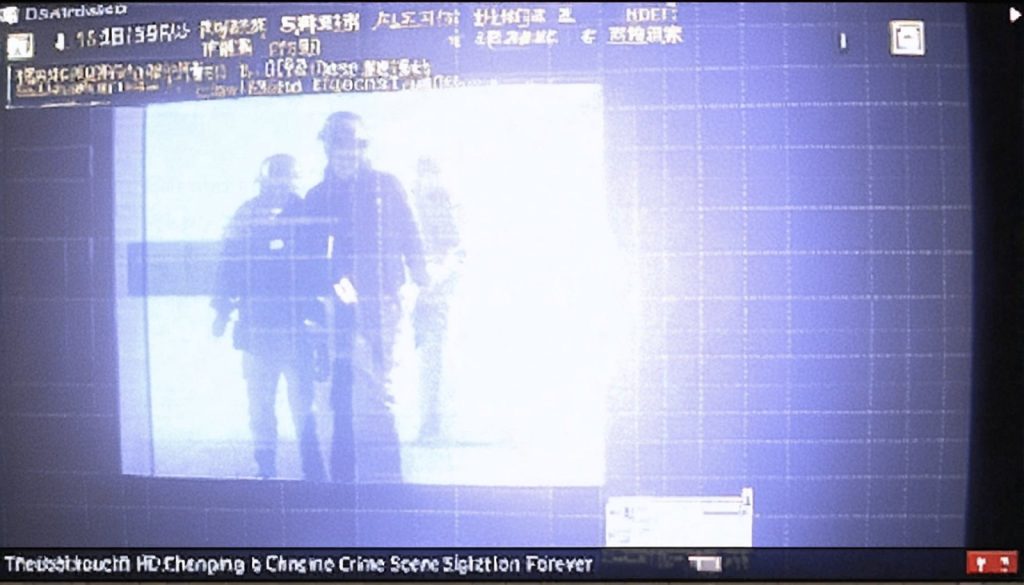
- Igor Lednev, a chemist at the University at Albany, is transforming crime scene investigations with an innovative laser technology.
- The laser device rapidly analyzes evidence, such as blood or gunshot residue, by producing unique “fingerprint” patterns decoded by AI.
- This method promises near-instantaneous DNA profiling, reducing current forensic delays for faster suspect identification.
- Gunshot residue analysis is enhanced, providing detailed insights into firearms and ammunition at a lower cost than traditional methods.
- The U.S. Department of Justice has invested over $500,000 to support Lednev’s research for the next five years.
- Despite its potential, the technology must gain acceptance within the forensic community, emphasizing rigorous validation for future adoption.
Underneath the sterile fluorescence of a forensic lab, Igor Lednev, a pioneering chemist at the University at Albany, is quietly revolutionizing the future of crime scene investigation. His potent vision involves a seemingly simple tool: a laser. This is not just any laser, though. It’s a ground-breaking device designed to unravel the secrets of crime scenes with unprecedented speed and accuracy.
Picture a beam of light delicately grazing over a smudge of evidence—perhaps a speck of blood or the imperceptible residue from a discharged firearm. As the laser sweeps over the sample, a dance of scattered radiation unfolds, revealing an intricate pattern akin to a fingerprint. This radiant fingerprint is then decoded by sophisticated AI technology, transforming complex data into a coherent story at breakneck speed.
Lednev’s method offers a tantalizing promise: the ability to instantly glean a complete DNA profile. Current forensic practices often involve prolonged waits, delays that can cost precious investigative time. However, with this new laser technology, the process becomes almost instantaneous, giving law enforcement a crucial edge. Imagine a world where officers can identify suspects within moments of arriving at the scene, drastically increasing the odds of apprehending perpetrators swiftly.
This innovation extends beyond DNA. Consider gunshot residue—a critical clue that can often slip through the cracks of current expensive and limited detection methods. Lednev’s laser exposes even the most elusive particles, providing unparalleled insight into the firearm used, its ammunition, and potentially tracing the gun back to its origin. Such comprehensive analysis, offered at a fraction of the cost of present technologies, could redefine standards in forensic science.
The significance of this development has not gone unnoticed. The U.S. Department of Justice has committed over $500,000 to propel Lednev’s research forward. This endorsement funds the ambitious endeavor over the next five years, bridging academia, law enforcement, and forensic experts statewide in a collaborative pursuit.
Yet, as with all scientific advancements, acceptance is key. The forensic community, by its very nature, moves cautiously, demanding rigorous validation before integrating new methodologies into judicial processes. Lednev’s vision is not just to prove his technology’s efficacy but to embed it into a portable device—one that officers can carry to crime scenes, ready to unlock the hidden narratives of any evidence they encounter.
In every beam of Lednev’s laser lies a beacon of hope for faster, cheaper, and more reliable forensic investigations. As this technology inches closer to reality, it’s clear that the silent, steady glow of a laboratory laser might soon illuminate the path to justice.
Cutting-Edge Laser Technology Could Transform Crime Scene Analysis
Exploring Laser Technology in Forensics: Beyond the Source
Igor Lednev’s innovative laser technology is on the cusp of revolutionizing crime scene analysis. By employing Raman spectroscopy, this breakthrough method unveils forensic secrets with remarkable speed and accuracy. The laser system analyzes scattered radiation from materials at crime scenes, creating a unique spectral fingerprint. This advancement is poised to address forensic challenges and enhance investigative processes.
How Lednev’s Laser Technology Works
1. Evidence Detection: The laser scans surfaces potentially contaminated with forensic evidence, such as blood or gunshot residues.
2. Spectral Fingerprint Analysis: The system records the light scatter pattern, which is then analyzed by AI algorithms to identify substances and provide insights.
3. Instantaneous DNA Profiling: The laser facilitates immediate DNA analysis, significantly shortening the time needed to identify suspects.
Real-World Use Cases and Advantages
– Instant Suspect Identification: Enables law enforcement to identify and apprehend suspects more rapidly.
– Gunshot Residue Detection: Precisely identifies residue particles that current methods might miss, linking firearms to incidents more effectively.
– Portability for Field Application: The aim is to create a portable device that officers can carry, enabling immediate on-site analysis.
Industry Trends and Future Prospects
With over $500,000 in funding from the U.S. Department of Justice, Lednev’s research draws nationwide attention. This financial commitment underscores the technology’s potential impact on forensic sciences. As this technology becomes more mainstream, expect increased adoption of laser-based forensics as a standard investigative tool.
Challenges and Considerations
– Validation and Acceptance: The forensic community requires exhaustive validation to integrate new methodologies into judicial proceedings.
– Training and Implementation: Law enforcement personnel will need training to effectively use the technology in the field.
Pros and Cons Overview
Pros:
– Quick DNA and evidence analysis
– Reduced costs compared to traditional methods
– Enhanced accuracy and reliability in evidence detection
Cons:
– Initial skepticism and slow adoption within the forensic community
– Requirement of substantial training for effective use
Practical Recommendations
For professionals in forensic and law enforcement fields, staying informed about advancements in Raman spectroscopy and other laser-based technologies is crucial. Participating in workshops and certification programs can help in understanding and utilizing this cutting-edge tool.
Conclusion
The integration of Lednev’s laser technology could significantly enhance crime scene investigations. By facilitating rapid evidence analysis, law enforcement agencies can expedite solving cases and delivering justice. As this technology matures, it promises to illuminate unforeseen pathways to solving crimes.
For more information on technological innovations in forensics, visit University at Albany.



